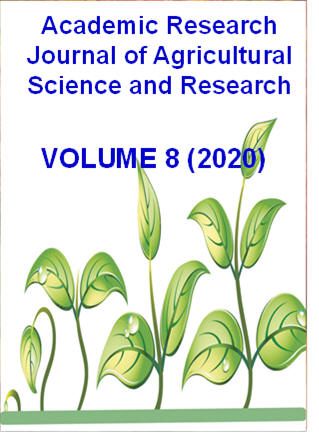|
ISSN: 2360-7874 |
Academic Research Journal of
Agricultural Science and Research |
|||||||||||||||||||
|
Vol. 8(5), pp. 477-484, June 2020 Review Malt Quality Traits of Different Barley Genotypes from High Growing Potential Areas of Ethiopia
Yadesa Abeshu
Food science and Nutrition Research Program, Holeta Agricultural Research Center, Ethiopian Institute of Agricultural Research; Addis Ababa, Ethiopia. Corresponding author Email: abeshuy@gmail.com Accepted 15 June 2020
Ethiopia is the second largest barley producer next to Morocco in Africa. But the quality traits are always influenced by the cultivar itself and growing environment. Thus, the study was targeted on assessment of barley malt quality traits of different genotypes grown at different locations. Sixty barley samples were collected from Holeta, Debre-Birhan and Bekoji. Samples were chemically analyzed in duplicate for five quality traits. The barley FBPVT and NPPT genotypes protein with 10.37% and 10.50% protein mean values respectively shown higher than the other genotypes statistically. Bekoji location reflected higher protein content (11.70%) than Holeta and Debre-Birhan locations with 8.93% and 8.31% protein values respectively. Genotypes NPPT, MBPVT, MBNVT OG and MBNVT N with 79.70%, 80.03%, 80.67% and 80.70% extract content respectively reflected higher value than FBPVT and FBNVTN. Higher extract content was recorded at Holeta and Debre-Birhan locations having 79.91 and 80.3% mean values respectively. Genotypes FBNVT N (68.33%), FBNVT OG (68.67%) and MBNVT OG (73.00%) were higher in friability mean values statistically. Holeta (76.71%) and Debre-Birhan (71.57%) locations scored higher friability content than Bekoji (42.57%). Genotypes like FBPVT with mean 862.7mg/L and FBNVT OG with mean 885.0 mg/L were higher in glucan content as compared to the other genotypes. Holeta and Debre-Birhan locations with 437.3 mg/L and 650.1mg/L value respectively reflected lower value than Bekoji with 958.1mg/L. But no significant variation in moisture content among the genotypes. The same trend was observed also in moisture content over locations similar to genotypes. Therefore, protein, extract and friability traits were in acceptable range according to international malt quality traits standards. But those traits lower in mean value were beyond the acceptable range.
Keywords: Barley, Genotypes, Malt, Trait
How to cite this article (APA Style): Yadesa A (2020). Malt Quality Traits of Different Barley Genotypes from High Growing Potential Areas of Ethiopia. Acad. Res. J. Agri. Sci. Res. 8(5): 477-484
|
|||||||||||||||||||
